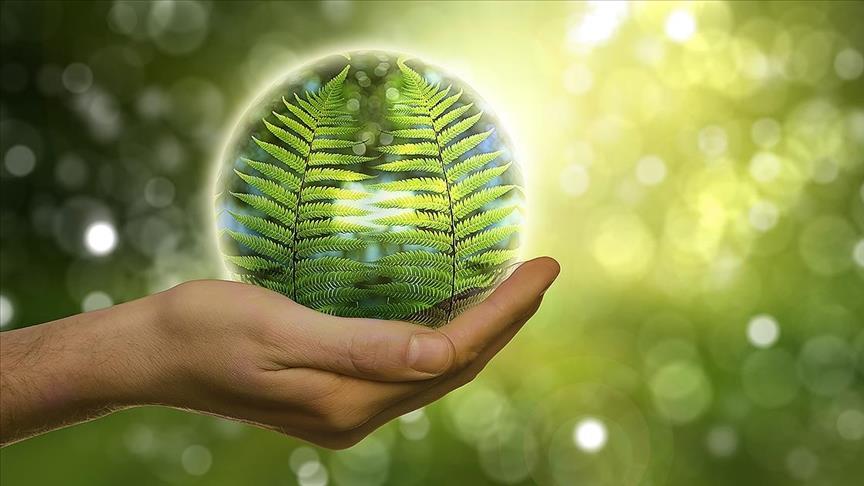

By Anadolu Agency
Countries around the world, including net fossil fuel exporters, are ramping up renewables in the face of an escalating energy crisis, supply chain disruptions, and rising costs because renewables provide the cheapest energy, a director from the European Bank for Reconstruction and Development (EBRD) told Anadolu Agency in an exclusive interview.
The world has been experiencing an energy crisis as a result of supply-demand imbalances caused by the rapid recovery from the COVID-19 pandemic, which has been exacerbated by Russia’s war in Ukraine. Natural gas, oil, and coal prices have skyrocketed as a result of supply disruptions, resulting in high inflation problems in many parts of the world.
Despite these challenges, Aida Sitdikova, a director of Energy Eurasia, Middle East and Africa of the Sustainable Infrastructure Group at the EBRD said that solar installations globally increased 13% in the first half of this year compared to the same period last year.
‘The (solar) installations for the total year will be over 224 gigawatts. This is despite all the problems, disruptions in the supply chain and increased costs. We think this trend will continue not just on solar but the wind and other technologies,’ she said.
According to an International Energy Agency forecast, global renewable capacity is expected to increase year on year by over 8% this year, surpassing the 300-gigawatt mark for the first time.
Sitdikova said the growth tendency is seen in most parts of the world from Türkiye to Kazakhstan, Egypt and Mongolia as governments look at diversifying their energy sources and stepping up renewable energy and energy efficiency.
– Solar and wind costs down by 15% and 13%, respectively in 2021
Data shared by Sitdikova showed that just $33 billion was invested in sustainable projects in 2012 but last year this amount peaked at $1.7 trillion globally.
‘So in less than 10 years, we see a really growing trend. The instruments to finance sustainable investments also increased because renewables are providing the cheapest energy,’ she said.
International Renewable Energy Agency’s data shows the global weighted average levelized cost of electricity (LCOE) of new onshore wind projects added in 2021 fell by 15% year‑on‑year to $0.033 per kilowatt-hour while that of new utility-scale solar PV dropped by 13% yearly to $0.048 per kilowatt-hour.
For offshore wind, the LCOE declined by 13% to $0.075 per kilowatt-hour.
The global weighted average LCOE of newly commissioned utility‑scale solar PV projects fell by 88% between 2010 and 2021, while that of onshore wind dropped by 68% and offshore wind by 60%.
– Twin challenge of energy and climate security
She warned that the world must address the twin challenges of energy security and climate security, as the effects of climate change are escalating every year, with potentially devastating economic consequences.
Sitdikova also underlined that reducing dependency on Russian gas is primarily about energy efficiency and scaling up renewable sources.
‘Europe has to use less gas to reduce dependence on Russia and has to find other alternative sources and scale up renewables. Europe is not giving up on the green agenda and the emissions reductions targets,’ she noted.
– High green hydrogen potential in Türkiye
Clean technologies are rapidly advancing in response to climate change challenges, and their costs are falling as electric vehicle charging infrastructure emerges as a viable market and green hydrogen projects begin to accelerate.
‘Green hydrogen is a field where Türkiye can definitely contribute to the world’s decarbonization. Green hydrogen is one of the very high potential areas in Türkiye for EBRD investments as the country is part of our study of green hydrogen markets,’ Sitdikova said.
‘I think given the renewables potential, the capacity and the depth of the market, we are very interested to have our first green hydrogen project in Türkiye,’ she noted.
Renewables accounted for about 50% of Türkiye’s installed electricity capacity of close to 103 gigawatts.
Sitdikova concluded that the EBRD is collaborating with countries to make their green vision a reality and that all of the Bank’s projects must be in line with the Paris Agreement by the end of this year.
We use cookies on our website to give you a better experience, improve performance, and for analytics. For more information, please see our Cookie Policy By clicking “Accept” you agree to our use of cookies.
Read More